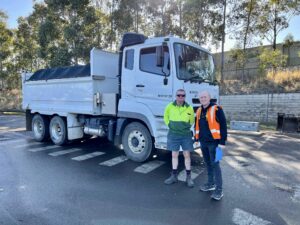
If you are a mechanic, everyone asks that questions, “my car does this thing when it’s cold, what do you think it is?” Or if you are an Accountant, you get the question, “hey, how can I reduce my tax bill?”
As a driver trainer, I often get the question, can my learner driver do your defensive driving program? I am grateful they think of us for starters, but I also know that a defensive program for a learner driver is just too advanced for where they are at. This question comes from a good place, just like anyone talking to a professional, people want the right advice.
As you can appreciate, I find it difficult to switch off, as is my nature I am always thinking of how to improve, how to extend and how to make a bigger difference.
I can be sitting at the traffic lights watching drivers turning in front of me and all I can do is see driving faults. Everyone different and everyone completely avoidable, these observations repeat over and over again to the point where we can see some common patterns.
This leads me to wonder why are there so many drivers making so many mistakes?
It might be their hand position on the wheel, or their visions (we look for this during training), distractions, poor practice, laziness, or simply rushing for no valid purpose.
This past month we have been delivering intensive heavy vehicle driver training to 350 heavy vehicle drivers for a company that is willing to invest in their employees. Chain of Responsibility COR is particularly onerous on anyone who influences the operation of heavy vehicles. Hence their need for an intensive training program.
As part of this program, we have been systematically coaching every driver, from theory to practical on-road training. Early starts, combined with different types of heavy vehicle has allowed us to observe many different driving habits. While most drivers demonstrate a good level of competency that is acceptable, we are still able to impart new ideas, techniques, and strategies to improve driver safety.
One of the main issues we see are outdated steering techniques that simply have gone by the wayside due to modern vehicle technology (airbags and power steering) and a better understanding of driver ergonomics.
But this isn’t the limit of common driving mistakes, back to our traffic watching and we see everything from children in the front passenger’s seat (airbags), to tailgating and everything in between. It seems that roadwork speed limits are just thrown out the window and stopping on the amber light is almost out of fashion.
The problem is how do we improve our drivers? How do we maintain our standards when there are so many problems to fix?
As a driver trainer I know the solutions, but how do we reach everyone? The fact of the matter is our roads are getting busier, drivers are frustrated and largely untrained. This leads to some of the problems we have outlined here.
The 350 drivers we are currently working with are all showing huge signs of improvement with nearly all of them embracing the changes. It’s almost like they are hungry for the information. Perhaps we are filling the void that has been present for so long and like cold air into a warm room that information is all consuming. At least the feedback from these drivers is reflective of an appreciation for the information they have learned.
Training works best when drivers are motivated to learn, and our fear is that the majority of the driving public feel they don’t need to change. We call it being unconsciously incompetent (sounds harsh, doesn’t it?), but the facts remain, we don’t know what we don’t know. How can you possibly know something like your hand being in the wrong position on the steering wheel can cause you terrible facial trauma from the airbag unless you are informed of such things?
Just like a mechanic that laughs at a driver who is unable to change a flat tyre, we tend to shake our heads at drivers that hit potholes, they are completely avoidable and if we are doing everything right should never pose a problem. Driving is risky, it is complicated and there lies the issue.
Authorities have tried to reduce the risks through road improvements and vehicle safety features, but human nature is to always find the path of least resistance, meaning we take shortcuts.
So, while most of you can enjoy your dive to the Hunter Valley or to your favourite holiday destination, spare a thought for us trainers that can never not see the obvious faults in the driving public. In one sense if everyone was perfect, we would be out of a job, but our observations only inspire us to do better and be better at what we do.
Stay safe and take care.
Stewart Nicholls
Managing Director – Steer Safely
www.steersafely.com.au
